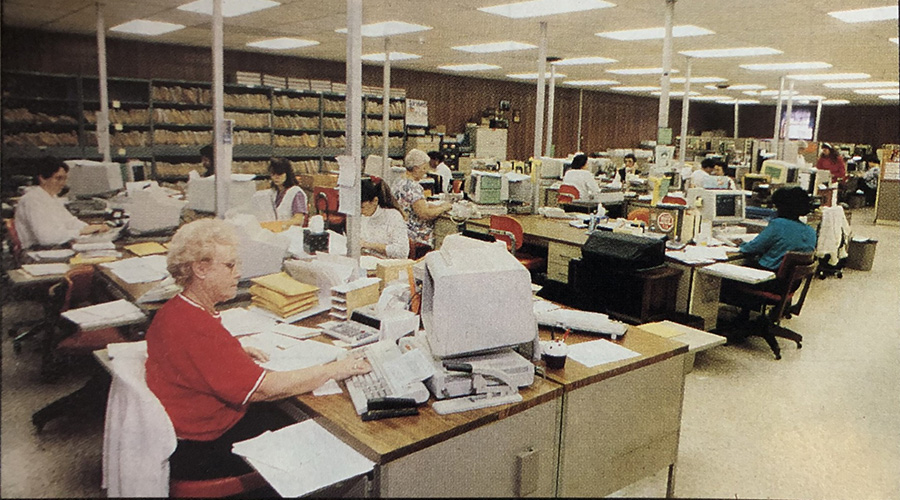5 Must-Have Skills Gen Z Needs for Facilities Management
Encourage Gen Z to join trades professions through apprenticeships, community colleges
The plan every young person needs to develop when considering the skilled trades route after high school is the optimum combination of skills they need to be marketable. Young people need to focus on how they can differentiate themselves from the competition. Is trade school training enough to land them a desirable position?
Gen Z candidates need to know that employers are looking for candidates with good interpersonal skills in addition to technical ones. They also need to know it is essential for skilled trades workers to have a strong work ethic and be willing to learn and adapt as they gain more experience.
Important skills include technical proficiency, problem solving, attention to detail, physical stamina, communication and organization.
There are numerous ways the Gen Z population can acquire these skills. They should explore multiple combinations of education and training that are available.
1.) Apprenticeship Programs
In the ever-changing landscape of growing skills trade development for Gen Zers, apprenticeship programs may provide a game changing solution. These programs provide a young person with the opportunity to learn while they earn and get hired by the employer involved with the program. This becomes a huge incentive for a young person that wants to get started on a trade skills career path immediately and for those who need to earn money upfront rather than paying for training out of pocket.
2.) Trade and Technical School Programs
Trade and technical schools (excluding community colleges) offer career-focused programs that typically result in certificates and diplomas. Students often enroll part-time so they can work. Typical certificate programs take four semesters to complete, and the classes are usually larger. Vocational school programs typically limit course enrollments to 25 students to allow for personal attention and the promotion of professional relationships among attendees.
3.) Community College Associate’s Degree (AA)
A quick perusal of AA degree programs available throughout the United States provides surprising results. The number of community colleges with AA Degree programs dedicated to the trades is remarkable. In 1988 the Nationwide Commission on the Future of Community Colleges recommended that they help build communities by creating partnerships with employers by creating programs for workforce training. Today, community colleges supply vocational training programs that terminate in certificates, coursework leading to AA degree programs and remedial educational services to meet the needs of a growing number of students.
4.) Registered Apprenticeship Program Coupled with AA Degree
The AA Degree program should have a concentration in business management, construction management or other management focus. As an example, the program offered by Anne Arundel Community College in Maryland, which in 2023 was ranked the top community college in the United States, provides a path to a degree for an individual who has completed a Maryland Department of Labor (MDOL) apprenticeship. Their program is called the Skilled Professional Management program and works with applicable apprenticeship programs such as Boiler Operator, Electrician, HVAC/R Technician, Machine Repairer (Maintenance), Maintenance Worker (Machinery), Pipefitter, Plumber, Sprinkler Fitter, Stationary Engineer, and Steamfitter.
5.) Partnership Programs with Industry, Trade Organizations and Community Colleges
Many corporations, particularly in rural America, rely on a locally trained workforce. Alliances between local companies, trade organizations, vocational institutions and community colleges serve these businesses and ease the financial burden the programs may bear. Some of these programs are on-the-job related and are provided by companies in-house. In-house training programs serve as a long-term workforce development strategy because they build programs designed to serve the exact needs of the company. Jeff Atwell, a workforce development coach at the NexTech Academy says that in-house training programs may gain momentum and become treated and budgeted the same way taxes and insurance are treated in a company today. Business owners committed to creating a sustainable pipeline of trained technical talent may find these programs to be an essential line-item in their company budgets.
My own personal experience
A real-life example of a Gen Z high school student trying to figure out the most appropriate career path is a young friend of mine who is a high school sophomore. He is smart and has an innate ability to think logically and is terrific at problem solving. Give him a diagram or manual and in 5 minutes he has figured out how to either fix something, put something together or make it work better. He wants to go into the trades, but his mom is pushing for some college.
We have long talks about the value of management, communication, and financial skills for someone who wants a future in the skilled trades. I think I have convinced him that knowing how to manage a team by providing accurate guidance and direction, the ability to write instructions and reports on work projects, and financial acumen related to projects budgets all are essential to a successful career in the skilled trades. This skills set is even more important since my friend is interested in becoming an entrepreneur and starting his own business.
The answer for him may lie in an AA degree coupled with vocational training and/or an apprenticeship program coupled with an AA degree.
The resurgence of the skilled trades as a career path provides an opportunity for Gen Zers to develop a profession that provides a real and necessary service plus financial stability, growth potential and longevity in a career. We need to get behind the tidal wave of interest and make skilled trades programs work for us. This is exactly what the facilities management industry needs.
What should we call this emerging workforce for the future that adequately defines how skilled they are and the value they provide? Since I am not a fan of the traditional term “blue collar worker,” I have wracked my brain to produce something catchy and clever. Articles about the emergence of skilled trades training as an alternative for Gen Zers usually refer to them as the “tool belt crowd” but even that does not seem to do them justice.
We should put our heads together and find an appropriate moniker for the install and fix it generation of new skilled trades workers that may just be the salvation for the facilities industry. Suggestions?
Stormy Friday is founder and president of The Friday Group, an international facilities services consulting firm.
Related Topics:













